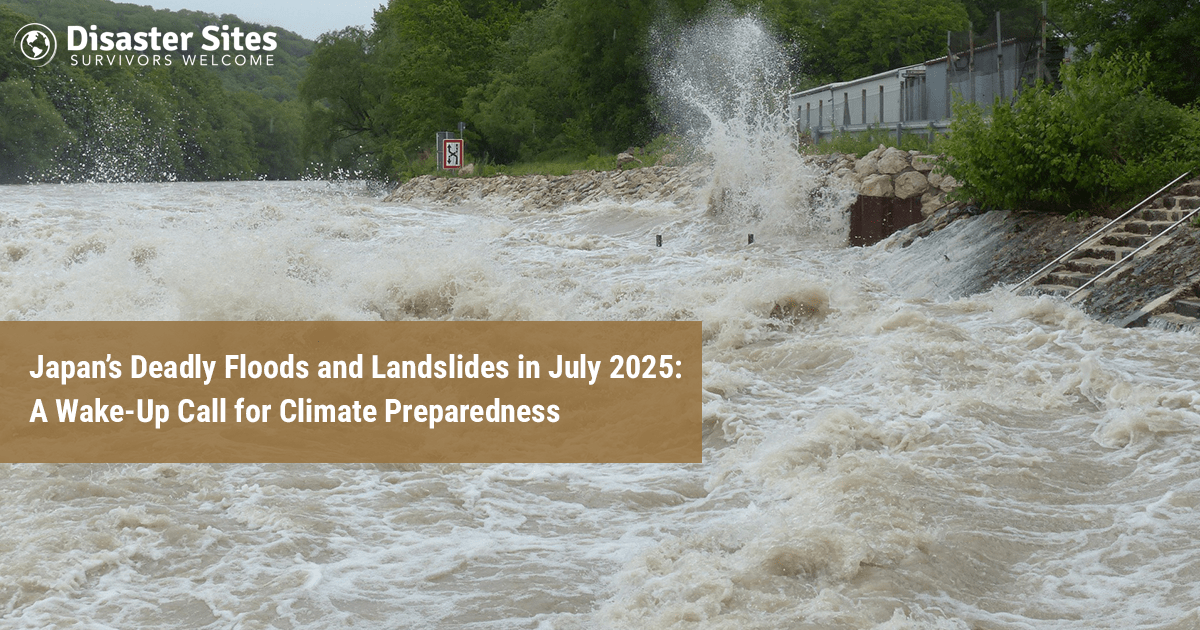We use cookies to personalise site content, social media features and to analyse our traffic. We also share information about your use of this site with our advertising and social media partners.
FEATURED
SPONSORED
VERIFIED

July 10, 2025 -
6 minutes, 22 seconds
-742 Views 0 Comments 0 Likes 0 Reviews

At the start of July 2025, Japan faced one of the worst natural disasters in modern memory. With heavy rains moving across the Kyushu area, flooding and landslides occurred which caused loss of life. Many thousands of people evacuated their homes, and properties and livelihoods were lost to deluges of rainwater. This natural disaster, which not only left lasting trauma in affected communities, re-used calls for Japan to rethink its disaster preparedness, and also rethink the increasing risks from climate change. It also highlighted the importance of separating fact from fiction in disaster awareness - something we address in our blog on the top 5 myths about natural disasters debunked.
To understand the underlying causes behind such catastrophic events, you can explore what triggers natural disasters: a beginner’s guide for a simple breakdown of the science and patterns behind them.
The torrent of rain began on July 1, and hammered the western side of Kyushu. The prefectures of Fukuoka, Kumamoto, Oita, Saga, and Nagasaki were among the worst impacted. In some places, the rain was torrential enough that there were new rainfall records. Kurume city had over 400 millimeters of rainfall in 24 hours. And streets turned into river valleys dissolved into rivers of mud.
The Japan Meteorological Agency (JMA) issued emergency warnings at its highest level. People were told to leave their homes in the impacted areas immediately. Unfortunately, the floods moved so quickly and with so much force that people were left stranded before taking any action. Rivers surged, and hillsides caved in on themselves, dropping rivers of mud on anything downstream, saturating the earth and sweeping it away.
The rain continued to fall across the area, with many complete neighborhoods in western Kyushu under water. Many areas were without power, and some areas where landslides and floodwater had cut off access were severely disrupted. Thousands of people were instructed to evacuate, and were now spending days in emergency accommodation to escape the disaster in locations such as community centers and local schools.
Rescue teams continually went out to rescue families caught in their homes, operating often at night in the unknown with the help of small boats, wearing yellow life vests and helmets, and rescuing families. In some cases rescues were at unanticipated times at night where families had no ability to get personal items. neighboring Yamaguchi which is located on Honshu Island experienced similar problems with heavy rain and flooding threats.
The Japanese government moved to contain the disaster’s impacts, rescuing people that were captured alive and providing emergency assistance to the communities most affected. The support was coordinated from the relevant agencies from each level of government and was focused on human suffering and the relief from trauma associated with the disaster. The immediate recovery efforts included the following:
The catastrophe had a deep impact on residents of Kyushu. By July 3rd, numerous deaths were confirmed, and some people were still deemed missing. In one case, an elderly couple in Fukuoka was trapped and buried by a landslide. The husband was later rescued, but unfortunately the wife was not.
Rescue teams, composed of Japan's Self Defense Forces, firefighters, and volunteers with multiple demands, worked tirelessly. They searched-ann-destroyed debris to search for people in flooded streets, moved mud and cleared debris and searched in collapsed houses. Helicopters assisted by delivering supplies to isolated areas and helping rescue people.
Scientists are sounding alarms over climate change's impacts: changes to the atmosphere are producing more frequent and more intense extreme weather phenomena. Global air and sea surface temperatures are rising, and the amount of moisture the warmer atmosphere can store is also rising. In a related concern, melting glaciers could wake up sleeping volcanoes, adding another layer of risk linked to global warming.
Data from Japan shows visible increases in extreme rainfall days over the last several decades. Experts in Japan report repeated disasters in Kyushu, including:
These events are becoming run-of-the-mill, and experts are adamant unless stronger actions are taken, it will only worsen to a more relatively frequent and deadly occurrence.
The flooding and landslides that occurred in July 2025 in Kyushu, Japan have reiterated the irrepressible forces - the very forces with which we engage - and the still uncertain typology of the environment. Around the globe, Japan's emergency services were immediately activated and saved many lives. However, they did reveal gaps around preparedness, societal resilience, and the increasing threat of climate change.

“To assist disaster survivors by providing a source for them to come together in time of need, to aid in the listing of events, information and other forms of assistance, and continuing support through the recovery process.”
Share this page with your family and friends.